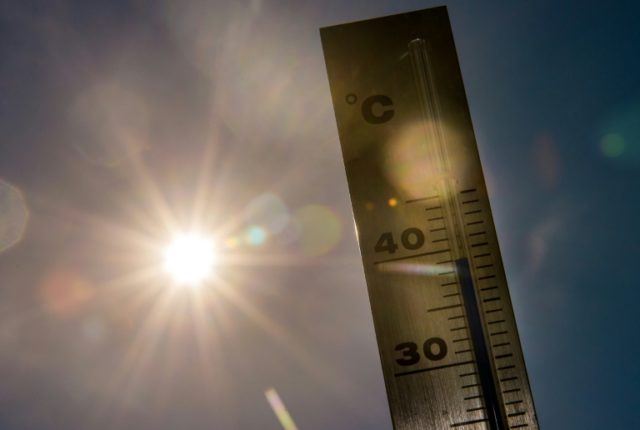Paris (AFP) – Climate change has made the record-breaking temperatures that roasted parts of Europe this summer at least 10 times more likely, scientists reported Wednesday.
“We found clear evidence of human influence on this summer’s record warmth, both in the overall summer temperatures and in the heatwave dubbed ‘Lucifer’,” said study co-author Geert Jan van Oldenborgh, a senior researcher at the Royal Netherlands Meteorological Institute.
“Climate change made the summer of 2017 at least 10 times more likely than it would have been during the early 1900s”, he said in a statement.
What used to be once-in-a-century calamity, in other words, is now to be expected every decade.
And if the greenhouse gas emissions which drive global warming continue unabated, a summer like 2017 will become the new normal along Europe’s Mediterranean rim by mid-century, the researchers added.
Scientists with World Weather Attribution, an international consortium focused on possible links between climate change and extreme weather, assessed the 2017 summer as a whole, as well as the Lucifer heatwave, which blasted southern Europe for three days in early August.
Starting in June, unusually hot weather rolled across France, Switzerland, Belgium, the Netherlands, Portugal and Spain. On July 13, Madrid hit 40.6 Celsius (105 Fahrenheit), tying a record set in 2012.
Early August saw an intense heatwave strike southeastern Europe, with temperatures topping 40 C (104 F) for several days running in parts of Italy and the Balkans. Daytime and night-time records were broken in France — Nimes hit 41.6 C (106.9 F) — as well as in Corsica and Croatia.
– Boosting the odds –
In France, the summer’s average temperature ranked second only to the deadly heat of August 2003, which caused at least 15,000 deaths — mostly among the very elderly — in France, and 70,000 across Europe.
“There have been some reports of deaths associated with the August heatwave, but the full extent of the impact is only evident later,” the researchers said.
The scorching heat in 2017 aggravated deadly forest fires in more than half-a-dozen countries, and ravaged agricultural yields in Bosnia, Serbia and parts of Italy.
The researchers combined detailed, local temperature data with climate model simulations to determine the odds of seeing a summer as hot as 2017.
Global warming, they concluded, has boosted those odds by a factor of at least 10.
For Lucifer, the team calculated that such lethal heatwaves are now at least four times more common than 100 years ago.
“If we do nothing to reduce our greenhouse gas emissions, the kind of extreme heat we saw this past summer will be the norm when my young son is a grown man,” said co-author Friederike Otto, a scientist at the University of Oxford and deputy director of the Environmental Change Institute.
The 196-nation Paris agreement on climate change, inked in 2015, commits the world to cap global warming at “well below” 2.0 C (3.6 F) compared to pre-industrial levels.
Compared to that benchmark, average global surface temperatures have already gone up by 1.0 C (1.8 F), and are certain to continue rising.
The report, which has not been peer-reviewed, can be seen here: http://assets.climatecentral.org/pdfs/Sept2017_EMBARGOED_WWA_EuroMedHeat_Lucifer_ScienceSummary.pdf

COMMENTS
Please let us know if you're having issues with commenting.